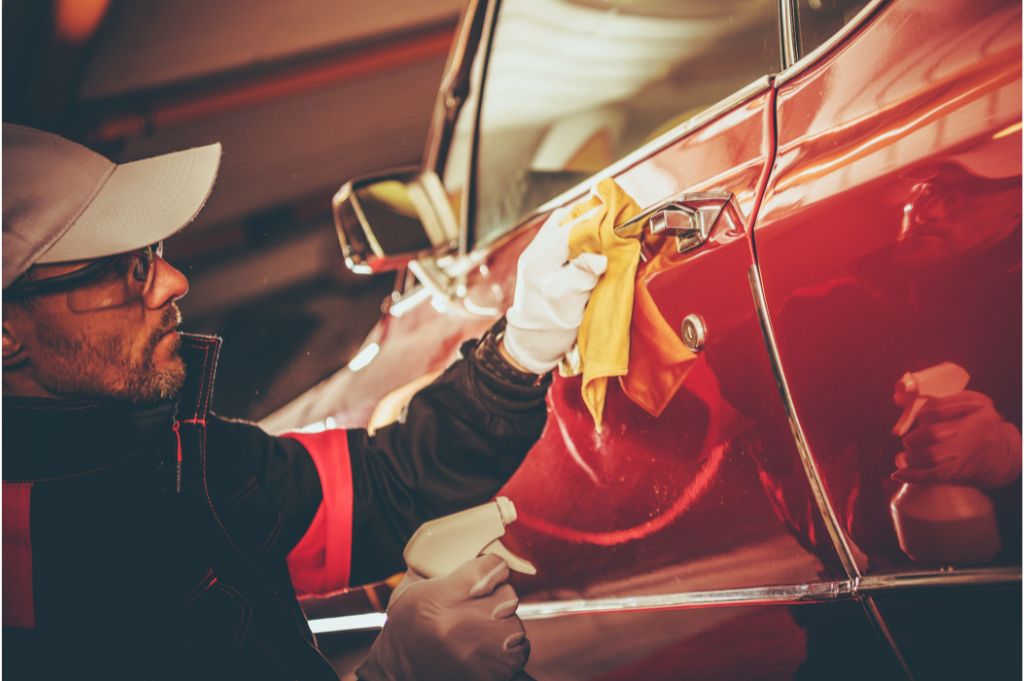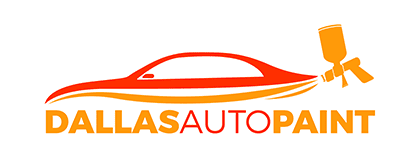Table of Contents
Toggle
Auto Body Repair and Restoration – Dallas Auto Paint
Welcome to the ultimate guide to auto body repair and restoration! If you’re a car owner, chances are you’ve experienced some sort of accident or damage to your vehicle. Whether it’s a small dent or a major collision, auto body repairs can be expensive and time-consuming. But fear not! In this comprehensive guide, we’ll cover everything from the different types of damage and their causes to DIY repairs and professional restoration services.
Auto Body Repair and Restoration
When your vehicle sustains damage, it can be a difficult and overwhelming process to get it repaired. You may be wondering where to start and what the best course of action is. This guide will provide you with all the information you need to know about auto body repair and restoration, from start to finish.
Damaged vehicles can be repaired in a number of ways, depending on the extent of the damage. For minor damage, such as dents, scratches, or chips, a repair can be as simple as buffing out the area or using touch-up paint. More significant damage, such as large dents or cracks, will require more extensive repair, which we will cover in more detail below.
No matter how big or small the damage is, it is important to have it repaired as soon as possible. Not only does this ensure that your vehicle looks its best, but it also prevents further damage from occurring. Once the damage has been sustained, it is more susceptible to further damage from the elements and everyday wear and tear.
So, now that you know why repairs are important, let’s take a look at the different types of repairs that can be performed on damaged vehicles.
Understanding the Different Types of Auto Body Damage
There are many different types of auto body damage that can occur to a vehicle. Some of the most common include:
- Dents and dings: These are small, usually circular, depressions in the metal surface of the car. They are caused by impact and can be repaired by removing the dent and then smoothing out the area with special tools.
- Scratches: Scratches may arise from various origins, such as other vehicles, keys, or even fingernails. They can range in size from very small to large, deep gashes. In most cases, scratches can be repaired by sanding down the area and then repainting it.
- Bumps and bruises: These are similar to dents and dings, but are usually larger and more irregular in shape. They are caused by the impact as well but oftentimes require more extensive repair work such as replacement panels or welding.
- Rust: Rust forms when iron or steel comes into contact with oxygen and moisture, resulting in a type of corrosion. It can cause serious damage to a car if left untreated and often requires complete replacement of affected parts.
No matter what type of auto body damage you have, it’s important that you get it taken care of as soon as possible. If not, it can lead to more extensive and expensive repairs down the road.
Preparing Your Vehicle for Auto Body Repair and Restoration
Before you begin auto body repair and restoration on your vehicle, it is important to properly prepare the area. This will ensure that the job is done correctly and will prevent any further damage to your car. Here are a few tips on how to prepare your vehicle for repairs and restoration:
- Make sure your car’s interior is free of loose items. This includes floor mats, seat covers, and any other objects that could get in the way.
- Cover up any areas that you do not want to get paint or other materials on. This includes using painter’s tape to cover trim, windows, and door handles.
- Wash the exterior of your car thoroughly. This will help remove any dirt or grime that could potentially interfere with the repair process.
- If you are working on rust damage, it is important to remove as much of the rust as possible before beginning any repairs. You can utilize either sandpaper or a wire brush for this task.
- Using a rust converter product on any remaining rust spots is also recommended. This will help protect the area from further corrosion.
- Make sure the area is well-ventilated. If you are working in an enclosed space, make sure to open windows or use fans to ensure proper airflow.
- If necessary, you may want to jack up your car and place it on jack stands for easier access to certain parts of the vehicle.
Essential Tools and Supplies You Need For Auto Body Repair and Restoration
When it comes to repairing and restoring your vehicle, there are certain tools and supplies that you will need in order to get the job done right. Here is a list of essential tools and supplies that you will need for auto body repair and restoration:
- A set of good quality hand tools including wrenches, sockets, ratchets, pliers, and screwdrivers.
- A power drill with a variety of bits.
- A jigsaw or other type of saw for cutting metal or plastic.
- An air compressor and an air hose with various attachments.
- Body filler, sandpaper, primer, paint, and other materials for repairing damage and restoring your vehicle’s finish.
- Safety glasses and gloves for protection when working with chemicals or sharp tools.
- A body hammer and dolly for shaping metal.
- Sanding blocks, sandpaper, and buffing pads for preparing the surface for painting.
- A polisher or buffer for restoring the shine to your vehicle’s finish.
How to Perform Basic Auto Body Repair and Restorations
Depending on the severity of the damage, auto body repairs can be simple and straightforward, or they may require more extensive work. In either case, it is important to have a clear understanding of the repair process before beginning.
For minor damages, such as dents, scratches, and chips, basic repair methods will suffice. These include using putty or Bondo to fill in holes and cracks, sanding down rough edges, and painting over the area. More serious damage, such as major dents or cracks, will require more extensive repair work. This may involve removing and replacing panels, welding new metal onto the frame, and/or applying primer and paint to the entire vehicle.
No matter what type of auto body repair you are undertaking, it is important to take your time and do the job right. This means following all directions carefully, taking all necessary safety precautions, and being patient throughout the process. With a little effort and attention to detail, you can perform basic auto body repair and restorations that will prolong the life of your vehicle.
Advanced Tips & Tricks For Auto Body Repair and Restoration
If you’re looking for advanced tips and tricks for auto body repair and restoration, this is the section for you. Here, we’ll share some of the more advanced techniques that can be used to repair and restore your vehicle’s body.
One of the most important things to remember when performing any type of auto body repair or restoration is to take your time. Rushing the process will only result in poorer quality work. Make sure to take the necessary time to prep the area, sand properly, and apply paint or other finishes evenly.
Another important tip is to use several thin coats of paint or other finishes rather than one thick coat. This will help to prevent runs and sags in the finish. Allow each coat to dry completely before applying the next one.
When repairing dents or other damage, it’s important to use the proper tools and techniques. If you’re not sure how to do something, don’t be afraid to ask for help from a professional or someone with more experience. There’s no shame in admitting that you need assistance; it’s better than making a mistake that could end up costing you more money in the long run.
Finally, always clean up your work area when you’re finished. This will help prevent rust and other damage from occurring down the road.
Common Mistakes To Avoid When Doing Auto Body Repairs
There are many common mistakes that people make when attempting to repair auto body damage. These mistakes can often lead to further damage, or even injury. It is important to be aware of these mistakes before beginning any repair work.
One common mistake is using the wrong tools for the job. Using the wrong size wrench or screwdriver can strip screws or damage bolts. Another mistake is using the wrong type of paint or primer. Use only automotive-grade paints and primers specifically designed for use on cars.
Another common mistake is not properly preparing the surface before beginning repairs. This can lead to poor adhesion and an uneven finish. Be sure to sand down any rough edges and remove any rust or debris before starting repairs.
Attempting to repair too much damage at once can also be a mistake. It is best to focus on one area at a time and slowly work your way around the car. Trying to rush repairs will likely only result in more damage.
Finally, one of the most common mistakes is not following directions carefully. When using a new product or tool, be sure to read all instructions carefully before proceeding. Failure to do so could result in serious injury or further damage to your vehicle.
Ask questions!
Like all services, make sure you have a full understanding of what the service will consist of. Ask what kind of paint will be used, ask about the process, and ask about the amount of time the service will take. The more questions you ask, the more confident you will feel about the overall job.
Dallas Auto Paint is an auto body shop you can trust! Our collective staff has been working on cars for over 25 years. We’ll explain the painting process and we’ll field any questions that you might have. Please take a look through our website—www.dallasautopaint.com—and our blog for additional helpful input. Contact Dallas Auto Paint in Dallas, TX at (469) 789-2474 for your vehicle needs!

